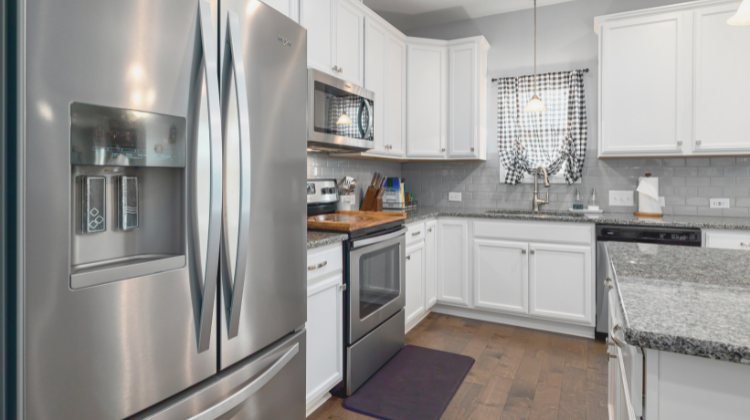
Investing in the stock market can feel like a wild ride. There are ups and downs, twists and turns, and sometimes it’s hard to know where to put your money. That’s why many investors are turning to dividend-paying stocks—reliable companies that share a portion of their profits with shareholders. In this article, we’ll look into Whirlpool dividend history. We’ll explore the company’s financial position and dividend safety, helping you make more informed investment decisions.
Whirlpool dividend history tells a tale of steady growth and consistent payouts. But, as any seasoned investor knows, past performance doesn’t guarantee future returns. It’s important to delve into the company’s fundamentals, understand its position in the market, and assess the safety of its dividends.
Table of Contents:
- Unpacking Whirlpool: More than Just Appliances
- Evaluating Whirlpool’s Dividend Safety
- Whirlpool Dividend History: Navigating Market Volatility
- FAQs about Whirlpool dividend history
- Conclusion
Unpacking Whirlpool: More than Just Appliances
Whirlpool Corporation, headquartered in Benton Harbor, Michigan, is a global leader in the home appliance industry. With iconic brands like Whirlpool, KitchenAid, Maytag, and JennAir, they have a product in nearly every kitchen and laundry room across the country. However, many might be surprised to know that their reach extends beyond just washers and dryers.
A Global Appliance Powerhouse
While their US presence is strong, Whirlpool operates on a truly global scale. With manufacturing and technology research centers in 55 locations and roughly 59,000 employees worldwide, they generated approximately $19 billion in annual sales in 2023, according to their corporate overview. This global diversification allows Whirlpool to weather economic storms that may be localized to certain regions. Investors seeking more than just dividends in a company can feel reassured by this type of market stability.
Innovation in the Appliance Market
Innovation is a key factor in Whirlpool’s success. The company is continuously developing new features and technologies, aiming to meet changing consumer needs and preferences. Recent innovations include smart appliances, energy-efficient designs, and intuitive user interfaces. Their ability to adapt and lead in an evolving market contributes to their continued profitability.
Evaluating Whirlpool’s Dividend Safety
For dividend investors, consistency and reliability are paramount. Before jumping into Whirlpool dividend history, let’s look at what makes their dividend seemingly secure. A few key factors are critical to assess a company’s ability to sustain its dividend payments. If you are wondering, “Does Whirlpool pay a dividend?” The answer is yes, and you can read more about why dividends matter when reaching for yield with dividend stocks.
Consistent Dividend Payments and Growth
Whirlpool has a respectable record of paying dividends for several years and has steadily increased their dividend payout over time. This suggests their commitment to sharing profits with shareholders. You can compare their impressive record with that of another reliable dividend payer, General Dynamics, in this article about its dividend history.
Consistent growth in dividends is generally viewed as a positive sign for investors seeking long-term returns. But consistent payments and even dividend growth doesn’t necessarily guarantee a safe dividend. It’s always important to check if that growth is backed by solid financial performance. This is one reason why Whirlpool is considered a stock buy by some investors.
Managing a Healthy Payout Ratio
A payout ratio is the percentage of a company’s earnings paid out as dividends. For Whirlpool, a payout ratio of around 45.78%, as reported by TipRanks, shows a responsible approach to distributing earnings. They reinvest a significant portion back into the business for growth, which makes sense given their emphasis on innovation.
Investors should be wary of a high payout ratio, usually above 60%, as this may signal an inability to sustain the current level of dividends in the future. Whirlpool Corporation’s payout ratio shows they have a strong financial position.
Whirlpool Dividend History: Navigating Market Volatility
Whirlpool dividend history paints an intriguing picture. The company’s dividend journey, with its peaks and troughs, showcases resilience in a volatile market. Looking deeper at this history, it’s clear that while Whirlpool generally trends upwards in its dividend payout, external forces sometimes intervene.
Riding Out the Recent Economic Storms
Even industry giants like Whirlpool feel the impact of economic downturns. Consider recent years: supply chain issues, inflation, and fluctuations in consumer demand have challenged the global economy. Yet, Whirlpool has maintained a regular dividend.
Some financial analysts see them as one of 13 “value stocks,” meaning they are undervalued by the market but have solid fundamentals and long-term growth potential. One recent analysis even spotlighted them as one of three consumer stocks with over a 5% dividend yield backed by recommendations from Wall Street’s most accurate analysts. This indicates they could be attractive options for income-focused investors. Their ability to navigate economic headwinds is reassuring for long-term shareholders.
Why Past Performance Doesn’t Guarantee Future Results
Whirlpool dividend history shows resilience, but this doesn’t guarantee they will continuously raise their dividend annually. Remember, future performance depends on factors like global economic conditions, competition, and strategic decisions by the company’s management. A thorough due diligence process is crucial, especially considering future uncertainties.
For example, Whirlpool is planning to present at the upcoming Goldman Sachs’ 31st Annual Global Retailing Conference. The outcomes and announcements at this event might offer a glimpse into their future outlook. A significant change in strategy or unexpected market shift could potentially impact future dividend payments. Investors often follow this type of news stock to learn about future growth opportunities and if a company will continue to pay dividends.
FAQs about Whirlpool dividend history
Is Whirlpool dividend safe?
Whirlpool dividend appears to be relatively safe, based on several factors. Their consistent payment history, recent increases, and a manageable payout ratio point towards continued sustainability. But external economic factors always come into play. The appliance market’s inherent cyclicality is something to keep in mind, too.
That’s why assessing future dividend safety involves monitoring the company’s financial health and watching for shifts in broader market trends. As with any stock, diversifying with mutual funds can help spread risk.
How often does Whirlpool pay dividends?
Whirlpool distributes dividends to shareholders on a quarterly basis, typically around the middle of March, June, September, and December each year. Each quarter, buyers purchasing shares can expect to receive dividends. Whirlpool Corporation’s dividend payment schedule has been consistent for many years. This consistency, in addition to the company’s strong financial position in the market, are some reasons why investors purchase Whirlpool stock.
Is Whirlpool a good stock to invest in?
If you’re seeking reliable income from dividends, and looking for exposure to a global leader in the home appliance market, then Whirlpool is worth considering. But remember, all stock investments involve some level of risk. Thorough research on the company’s financials, their position within the industry, and overall market trends should be part of any prudent investment decision.
Their recent dividend declaration of $1.75 per share indicates a positive trajectory, though future payments remain subject to the board’s discretion and market performance.
When did Whirlpool stock split?
Whirlpool’s stock split history includes a 2-for-1 split that took place on May 21, 2004. Stock splits are a way for companies to make their stock more affordable. Stock splits should not be viewed as a negative or positive sign when it comes to the underlying business.
Conclusion
Whirlpool dividend history provides insight into their financial strength and commitment to sharing profits with their investors. This established brand demonstrates the ability to weather various market cycles. Before making investment decisions though, research and due diligence are vital for anyone considering adding this appliance giant to their portfolio.
Ultimately, understanding Whirlpool’s business model, management strategy, and potential for continued dividend growth can help determine if this stock aligns with your own financial goals. You can use our helpful dividend calculator to estimate potential future returns.









